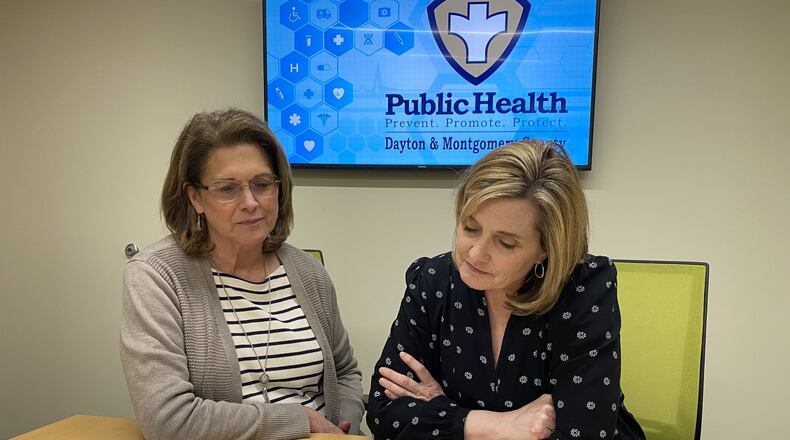MORE: Hospitalizations spike to highest point of flu season
Mary Proctor, nurse coordinator with Public Health- Dayton & Montgomery County, said communicable disease reporting nurses have been touching base with the travelers from China who have been identified at their airport of entry by the CDC.
Proctor said public health officials check in every day with the returning travelers who are asymptomatic but self isolating for 14 days, during which the returning travelers monitor their temperature twice a day and monitor for any respiratory symptoms.
“If a person does come down with symptoms we would assist them in getting the care that they need and continue to work with them,” Proctor said.
Right now, Public Health is also in close contact with the Ohio Department of Health, which is also working with the CDC.
PREVIOUS COVERAGE: Area health care workers, hospitals prepared for outbreaks
“We have multiple calls per week when coronavirus is discussed,” Public Health spokesman Dan Suffoletto said.
With the outbreak’s spread, misinformation about the novel coronavirus has also spread virally across social media.
Suffoletto said it is important that people look for information from trusted sources, such as Public Health, WHO and the CDC.
“We want to make sure people are aware of what they are reading and what their sources are,” Suffoletto said.
Suffoletto said Public Health also wants to make sure people have the right prevention information and don’t stigmatize people based on their race, when the true risk factor is whether someone has been in close proximity to the virus.
“We’ve seen reports in other areas of the country where people have been ostracizing people of Asian descent but yet those people have never even been to China,” he said.
He said there is also no risk from ordering items shipped from China because of the travel time.
Just as with influenza and other illnesses, Ohio Department of Health recommends practicing good hand washing, covering coughs and sneezes with your sleeve or elbow, staying home when you feel ill and avoiding exposure to others who are sick.
MORE: Businesses open employee health clinics to curb costs
Joyce Close, Public Health’s supervisor for the Bureau of Communicable Disease, said if someone happened to get sick, health officials would use the same protocol they have for other communicable diseases where they would trace who the sick individual had been in contact with.
“The contact tracing allows you as an individual citizen to know that you have no risk, because you have not been contacted by public health,” Close said.
What is COVID-19?
The virus, COVID-19, is part of a large family of different coronaviruses, that may cause mild to severe respiratory illnesses. Sometimes a novel — or a new type — of coronavirus starts to circulate among people.
This happened with severe acute respiratory syndrome (SARS) in 2003 and Middle East respiratory syndrome (MERS) in 2014, and now COVID-19, which started spreading in December.
Some infected people have had little to no symptoms while other people have become severely ill.
Scientists can’t tell yet how deadly COVID-19 really is — and deepening the mystery, the fatality rate differs even within China.
As is usual at the beginning of an outbreak, the first patients were severely ill before they sought care, said Dr. Bruce Aylward, the World Health Organization envoy who led a team of scientists just back from China, at a Tuesday media event.
By the time people were getting sick in other parts of China, authorities were better able to spot milder cases — meaning there were more known infections for each death counted.
And while there are no specific treatments for COVID-19, earlier supportive care may help, too. China went from about 15 days between onset of symptoms and hospitalization early in the outbreak, to about three days more recently.
Still, Aylward expressed frustration at people saying: “‘Oh, the mortality rate’s not so bad because there’s way more mild cases.’ Sorry, the same number of people that were dying, still die.”
In the central China city of Wuhan, where the new coronavirus first exploded, 2% to 4% of patients have died, according to WHO. But in the rest of hard-hit China, the death rate was strikingly lower, 0.7%.
A cousin of this new virus caused the far deadlier severe acute respiratory syndrome outbreak in 2003, and about 10% of SARS patients died.
Flu is a different virus family, and some strains are deadlier than others. On average, the death rate from seasonal flu is about 0.1%.
That’s far lower than what has been calculated so far for COVID-19. But millions of people get the flu every year around the world, leading to an annual death toll in the hundreds of thousands.
Associated Press contributed to this report.
About the Author
